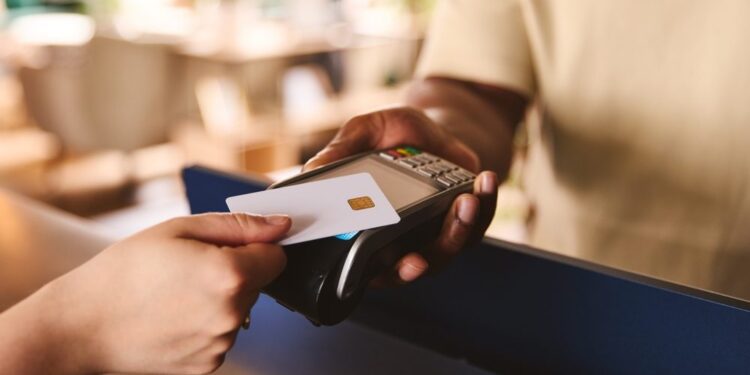The adoption of contactless payments in the United States has surged in recent years, bringing forth a blend of security and convenience. As consumers increasingly gravitate towards using tap-and-go transactions, traditional payment methods are quickly being overshadowed. The focus keyword here, “contactless payments,” encapsulates this revolutionary shift in how we handle transactions.
Digital wallets, RFID cards, and NFC technology have become the norm, offering a seamless and secure alternative to physical cash and checks. This digital transformation not only caters to consumers’ demands for speed and ease but also addresses their need for enhanced security features.
The rise of contactless payment solutions

The increasing popularity of contact-free payment systems is undeniable. Within a relatively short span, tap-and-pay solutions have transitioned from being a novelty to a necessity. Fueled largely by the global pandemic, consumer habits shifted drastically, with many people opting for more hygienic payment methods. As businesses quickly adapted to meet these new demands, technologies like near-field communication (NFC) have become integral components of modern payment infrastructures.
From credit card terminals equipped with RFID chip readers to smartphones with built-in digital wallets, the array of contactless payment options has widened significantly. Consumers can now enjoy the luxury of paying for goods and services with a simple wave of their device, reducing the need for physical contact with payment machines.
Factors driving acceptance
Several key factors contribute to the growing acceptance of contactless transactions. First and foremost, consumer desire for speed and efficiency cannot be underestimated. In a world where time is of the essence, reducing the friction associated with traditional payment methods is crucial.
Secondly, the evolution of technology has played a significant role. Enhanced security measures, such as tokenization and encryption, have alleviated many of the concerns associated with digital payments.
These technologies ensure that sensitive data is never exposed, providing an added layer of protection that traditional payment methods do not offer. Additionally, incentives offered by financial institutions and payment processors have encouraged widespread adoption among consumers and merchants alike.
Technological advancements supporting growth
The rapid evolution of payment technology has been instrumental in supporting the growth of contactless methods. High-speed internet, the proliferation of smartphones, and the development of secure wireless communication protocols have all contributed to creating an environment conducive to adoption.
The introduction of mobile wallets has further simplified the contactless experience, integrating payment processes with other functionalities like loyalty programs and digital receipts. This convergence of services provides users with a comprehensive solution that caters to various aspects of their financial lives, making the transition to modern payment systems more appealing.
Balancing security and convenience
Security and convenience are the dual pillars on which the success of contactless payments rests. While consumers appreciate the speed and ease of tap-and-go transactions, they remain wary of potential security threats. Therefore, striking a balance between these two aspects is paramount to ensuring long-term adoption and success.
To address these concerns, payment providers have invested heavily in developing robust security protocols. Strategies such as dynamic cryptograms, which change with every transaction, and biometric verification are among the many measures adopted to safeguard consumer information. As these systems mature, they continue to win over skeptics, bolstering confidence in the technology.
Future outlook and challenges
The future of contactless payments holds exciting possibilities, with continuous improvements in technology and user experience. As the infrastructure supporting these methods expands, their usage is expected to increase even further. Wearable technology, for example, represents a new frontier for contactless transactions, offering unprecedented convenience and accessibility.
However, challenges remain on the horizon. The fight against cybersecurity threats is ongoing, requiring constant vigilance and innovation to prevent fraud and data breaches. Additionally, achieving universal acceptance across different merchant types, including small businesses, necessitates overcoming barriers such as implementation costs and technological integration.
Driving user adoption and trust
Building user trust is critical to driving further adoption of contactless technology. Transparency in how data is handled and clear communication about safety measures are essential in fostering this trust. Companies must take proactive steps to address any concerns and educate users on the advantages of these payment methods.
Incentives, such as cashback offers or discounts for using contactless options, can also encourage consumers to make the switch. Furthermore, partnering with trusted brands and financial institutions can lend credibility and reassure hesitant customers.
As awareness grows and trust in the technology is strengthened, more consumers will likely make contactless transactions a routine part of their daily lives. Ultimately, the key to widespread adoption lies in delivering a secure, seamless, and rewarding user experience that meets the evolving demands of modern financial interactions.



